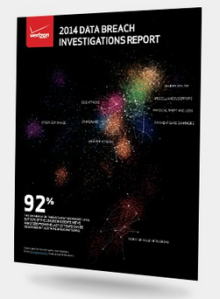Excerpt from the 2014 Data Breach Investigations Report.
“We have more incidents, more sources, and more variation than ever before—and trying to approach tens of thousands of incidents using the same techniques simply won’t cut it. Not only would the dominant incident characteristics drown out the subtleties of the less frequent varieties, but we cannot continue to study those characteristics as though they occur in isolation. In order to expose latent patterns in the data, we applied a statistical clustering technique. We identified nine patterns that together describe 92% of the confirmed data breaches we collected in 2013. We find it simply astounding that nine out of ten of all breaches observed by 50 global organizations over a full year can be described by nine distinct patterns.”
Download full report here.


